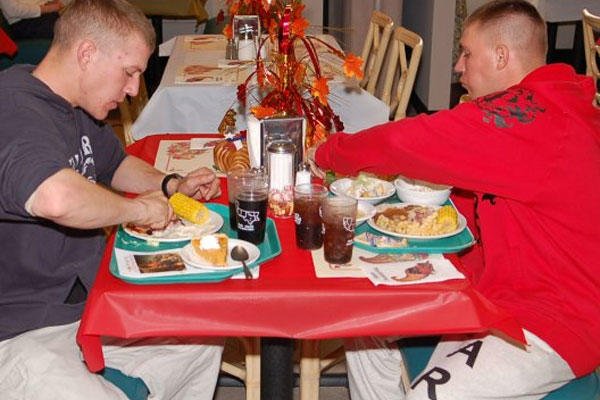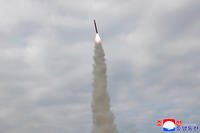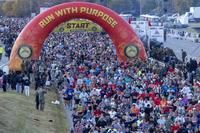WASHINGTON --- Dining facilities across the Army are offering more nutritious food these days, with the aim of improving Soldier performance.
According to Army dieticians who have been conducting food program evaluations and administering satisfaction surveys, Soldiers have said they like the results of the new effort.
Since food can be likened to fuel, where calories are consumed, stored and then burned by the body, the effort to provide healthier meal options to Soldiers has been named the "Soldier Fueling Initiative."
The goal is to "incorporate science into food preparation and education, in order to improve the physical and mental health of our Soldier athletes," said Lt. Col. Sonya J. Cable, chief, Human Dimensions Division, Military Training Center of Excellence.
Cable, a registered dietician and a certified sports dietician, refers to all Soldiers as "athletes," due to their unique, often rigorous, training and mission requirements.
The effort began several years ago when the Army became increasingly alarmed that its entry-level Soldiers, as well as others, were experiencing health issues and lower physical fitness levels due in part to poor diet and eating habits, Cable said.
It is not solely an Army problem, she said, but rather endemic to the modern American lifestyle with its propensity for eating unhealthy fast food as well as fatty, sugary snacks.
"Young people bring those problems with them to the Army," she noted.
This became not just a personal problem for Soldiers, she said. It became a mission-related problem as well.
While Cable said the Army has no plans to call out "the food police" on Soldiers, she said the Army must find a way to make healthier choices available.
"We can and should offer Soldier athletes better food choices, starting with our dining facilities," Cable said. She also said the Army must provide Soldiers with proper dietary training.
Problems arose early on with the effort in 2006 when Army dieticians began exploring healthier food options.
"It was tough to find ingredients in food products from vendors that tasted good and looked good," she said. Healthy food choices could be offered, Cable said, but if they didn't look good or taste good, Soldiers might not choose to eat them.
"But within the last several years, the food service industry has responded to a growing demand from consumers for healthier, tastier food choices," Cable said. "It is now quite easy to find quality options, food that Soldiers would choose to eat."
Once those options became available, Training and Doctrine Command headed for the kitchen -- in a manner of speaking. They invited culinary experts and researchers from around the Army to develop better tasting, more nutritious food options for Soldiers.
"It was a community effort," Cable said.
Included among those who helped develop the better tasting food options are the Initial Entry Training Center of Excellence, in charge of the Fort Jackson, S.C., dining facilities where the experimentation first took place; the Joint Culinary Center of Excellence, which runs Army dining facilities, along with Army Installation Management Command; the Army Public Health Command, which, along with the Army Research Institute of Environmental Medicine took part in the research and studies; and others.
By August 2010, all the ingredients were in place and TRADOC hosted a food summit. The goal was to come to an agreement on what the standardized menus would look like.
Besides experts from the aforementioned organizations, other attendees who had a seat at the table came from the logistics and resource management communities, since there is a good deal of logistics that goes with food transport, storage and procurement.
Cost was an important factor during the discussions. "We couldn't just blow out walls and buy new food preparation equipment," she said. "It would all have to be done within our existing budget."
The parties came to an understanding, she said, and program evaluations were conducted. Trainees at one dining facility at Fort Jackson received nutritious food, including fruits, vegetables, lean meat, baked food and less sugary drinks and snacks. Trainees at the other dining facility were served traditional dining facility fare, including deep fried dishes, cakes and cookies.
Then something surprising and completely unexpected occurred, she said.
"After we administered satisfaction surveys to trainees at both dining facilities, we discovered that the biggest complaint from the healthy food dining facility was that there needs to be more variety in fruits and vegetables offered," Cable said.
The thinking had been that the trainees would be unhappy that the sugary, fatty junk foods were absent.
The other surprise came from the control group at the traditional food dining facility. "Their feedback was mostly being disappointment at not having healthier choices," Cable said.
"'We joined the Army for a challenge and to improve ourselves and were disappointed with the quality of food,'" was a typical comment, she said.
Objective measurements were taken as well. "We definitely found improvements in lipid profiles and significant body fat reductions," she said, adding that profiles in mood were noticed as well.
The program evaluation was so successful that in February 2011, Soldier Fueling Initiative was launched at all initial entry training dining facilities and efforts were made to go Army-wide, she said.
A block of instruction for trainees, called Sports Performance Nutrition was added to the training regimen as well. Trainees learned what types of foods and how many calories to consume based on the day's activity. For example, she said they would consume less calories on a day at the rifle range but more on a day when an arduous foot march was planned.
As of today, the Soldier Fuel Initiative is about 60 percent fully implemented Army-wide, Cable said, including full implementation at all installations in Europe and Afghanistan.
The other services have taken an interest in the program, she noted, and there's even national interest.
She said that it takes time for the initiative to be fully implemented because contracts already in place to food vendors must be fulfilled. "This can't turn on a dime," she noted. "But as opportunity presents itself, we can work to modify contracts or write new ones" to procure healthier foods and ingredients.
But Soldiers at dining facilities where the initiative is still underway can make better informed food choices using the "Go For Green" program, part of the Soldier Fueling Initiative. She explained that Go For Green, now in place at dining facilities Army-wide, stipulates that all food be labeled with three easy-to-understand color codes: red for foods deemed not nutritious, amber for less nutritious, and green for very nutritious.
Along with those surprise findings during the experimental trials at Fort Jackson, a few other serendipitous ones came up.
"We heard stories at the (Fort Jackson) dining facilities from contractors who successfully applied the Soldier Fuel Initiative to their own personal lives and lost weight," Cable said.
"One regional manager said slips and falls in the dining facilities decreased by about 10 percent due to fewer grease spills on the floor," she continued. "Contractors said it became easier to clean the kitchen. Fewer plumbing problems were experienced because less grease was poured down drains."
The icing on the cake, she said, was that "cooks told us they have a renewed sense of pride in preparing meals for Soldiers. Previously, they were simply taking prepared items and just heating and serving. Now, they've returned to using recipe cards using natural ingredients and are actually 'cooking' again."






























